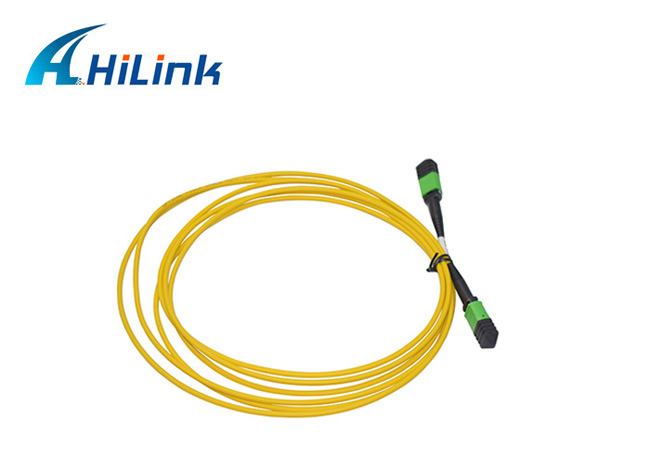How to Distinguish between MTP and MPO Patch Cords?
Sep. 05, 2023
Both MTP and MPO fiber patch cords come with connectors on both ends and are bend insensitive, well polished, and low loss, making them ideal for high-density cabling systems and cable management cabling where space saving is required. The main difference between MTP and MPO fiber patch cords is their connectors, which will be described in detail in this article. Designed as a single cable terminated with MTP/MPO connectors, the hilink MTP/MPO patch cord cable is used for 40G/100G/200G/400G data center cabling. With highly integrated design and manufacturing capability, we provide customized MTP/MPO patch cables that are 100% tested to deliver optimal performance and reliability. The next MTP/MPO patch cords cable supplier will introduce them in detail.
How do distinguish between MTP and MPO fiber patch cords?
Although MTP fiber patch cords can be directly interconnected with MPO fiber patch cord-based cabling systems, MTP and MPO fiber patch cords differ in terms of connector type, pin clips, floating collars, guide pins, removable housings, and performance.
Connector Types
MPO (Multi-Fiber Push-Out) connector is a connector with at least 8 fibers, designed to provide multiple fibers in one connector, complies with IEC 61754-7 standard and US TIA-604-5 standard, very suitable for high bandwidth and high-density cabling system connection.
MTP (Multi-Fiber Pull-Out) connectors are manufactured by US Connector and are an improved version of MPO connectors, so MTP connectors are fully compatible with generic MPO connectors and can be directly interconnected with MPO fiber optic patch cord-based cabling systems. However, the MTP fiber optic patch cord connectors can have improved optical and mechanical performance compared to the generic MPO fiber optic patch cord connectors.
Pin Clips
MTP fiber patch cord connectors are usually equipped with metal pin clips to better tighten the pins to minimize accidental breakage during use, while MPO fiber patch cord connectors are equipped with plastic pin clips that may cause the pins to break during use.
Floating collar
MTP fiber patch cord connectors have floating collars that can be used to improve mechanical properties. In other words, the floating collar of the MTP fiber patch cord connector can float internally to maintain a stable connection despite the applied load. However, MPO fiber optic patch cord connectors do not have floating collars.
Guiding Pins
Unlike single core fiber optic connectors, the adapters of multi-conductor fiber optic connectors are used for coarse alignment only. Therefore, guide pins are critical for precise alignment when using two MT collars together.MTP and MPO fiber patch connectors also use different guide pins.MTP fiber patch connectors are tightly fixed stainless steel circular guide pins to reduce debris in the guide holes and on the collar end faces.MPO fiber patch connectors use cylindrical guide pins that may generate debris when in use.
MTP fiber patch cord connector has removable housing
MTP PRO fiber optic patchcord connectors have a removable housing that allows users to rework and polish the MT seal gasket, easily perform performance tests, and easily change polarity after assembly and even in the field. MTP PRO fiber optic patchcord allows for quick and efficient cable configuration and polarity changes in the field while maintaining product performance.
Performance
MPO fiber patch connectors have been recognized as the international standard for fiber optic cabling for 40G/100G data center cabling architectures. However, using MPO fiber patch connectors may cause some problems, such as return loss, packet loss, etc. An MTP fiber patch connector is a high-performance MPO connector designed to ensure the polarity of the fiber patch cord, which helps reduce insertion loss and return loss when transmitting data in high-density cabling systems.












